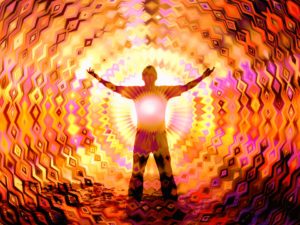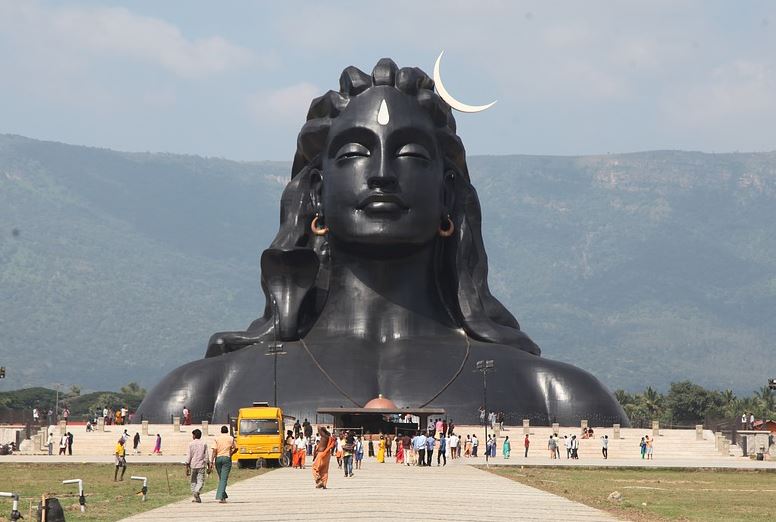For many years, Hindu followers have tried to obtain one goal throughout their life. Each follower wants to be guided or become a “guru” or “realized one” (Fisher, M., 2005). According to Mrs. B. Robinson (2006), Hinduism is the third most practiced religion in the world. The 873 million followers (Robinson, B., 2006) are currently spread out all over many nations. Many of their rituals and beliefs have been misunderstood since the religion was created. So far, Hinduism has spread throughout the world and has gained many new followers, who are also looking for personal enlightenment.
Hinduism Roots
Beginning of Hinduism
According to Mrs. M. Fisher (2005), the Hindu religion was named in the 19th century, by the British government’s census reports. The name was created to identify the people, who lived in the Indus River region. The religion’s beginnings have been traced to, as far back as 4000 BC. Most Hindu followers passed their beliefs down from generation to generation, by word of mouth. Somehow, the original followers were able to keep their religious beliefs and rituals alive.
Growth Brings Change
Before long, many more people began following the Hindu way of life and worshiping their own goddesses. After, the followers began dealing with invasions of the cultures, which altered their beliefs and rituals.
Many followers worshipped in their daily lives, by following the different deities inside their own villages. Soon, thousands of followers had to make a choice about what they believed. Finally, followers split the Hindu religion and many began following their own beliefs.
Divided They Stand
The two major differences in Hinduism’s beliefs grew from the division. Several followers began arguing that Shiva is the Ultimate Deity. However, many still believed that Vishnu is their divine personal God. According to Mrs. Robinson (2006), these divisions are called Hinduism, Sanatana Dharma, and Vaidika Dharma. Many followers are still divided in their beliefs and scholars are still arguing that there were no central origins for the Hindu’s religion.
Hinduism Beliefs
Sacred Texts
Among the Hindu religion, there are two types of texts: “Sruti (heard) and Smruti (remembered)” (Religion Facts, 2007). Each of the Sruti texts is believed to be divinely inspired and believed by millions. The Smruti texts are considered to be authored by inspired followers. These two types of text work together, in order to help the followers to fully understand them. The Vedas are considered to be the only Sruti text that exists and is memorized by the followers. There are many other texts that are read and followed by the Hindu religion.
Several Deities
According to M. Fisher (2006) there are 330 million deities that followers believe exist in India alone. Most followers believe in Vishnu and Shiva, along with many other sacred deities. Each follower has an altar in a spare bedroom or the family room, where they worship with daily rituals, incense, prayer, and incantations. Each follower’s village recognizes its own gods and goddesses that exist around them. The many deities they worship, cause many scholars to argue over the type of religion that they are.
Personal Enlightenment
Most followers are looking for enlightenment; however, it takes many years to become a guru or spiritual guide. Each follower believes that their soul is reincarnated after death and is given a new life. Most followers believe that karma will determine how the person lives their next life.
 According to Robinson (2006), the followers believe that through their acts and deeds ill help them escape samsara (the cycle of life, death, re-birth) and become enlightened. They believe that their meditation through yoga will help to obtain peace and bliss. Also, many followers believe that yoga can help them raise the energy centers along the spine called charkas.
According to Robinson (2006), the followers believe that through their acts and deeds ill help them escape samsara (the cycle of life, death, re-birth) and become enlightened. They believe that their meditation through yoga will help to obtain peace and bliss. Also, many followers believe that yoga can help them raise the energy centers along the spine called charkas.
Conclusion
No one can say for sure when the religion started, but it has grown into the “world’s third-largest religion” (Robinson, B., 2006). Through the years, scholars have tried to label the religion as Polytheistic, Monotheistic, Trinitarian, or Henotheistic. However, there is no one label to this religion and its roots of origin. Today, the religion known as Hinduism is considered “the world’s oldest organized religion” (Robinson, B., 2006). Each person is looking for enlightenment, by following their religious beliefs and practices daily.
References
Fisher, Mary P., (2005) Living Religions, Sixth Edition; Hinduism
Published by Prentice-Hall; Copyrighted by Pearson Education Inc.
ISBN: 0-536-98811-0
Religion Facts (2007) Hindu Sacred Texts
Retrieved on the World Wide Web on April 7, 2007
http://www.religionfacts.com/hinduism/texts.htm
Robinson, B., (2006) Hinduism: A General Introduction
Ontario Consultants on Religious Tolerance
Retrieved on the World Wide Web on April 7, 2007
http://www.religioustolerance.org/hinduism2.htm
Robinson, B. (2006) Hinduism: The world’s third largest religion
Ontario Consultants on Religious Tolerance
Retrieved on the World Wide Web on April 6, 2007
http://www.religioustolerance.org/hinduism.htm






